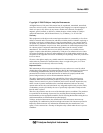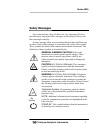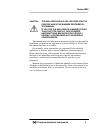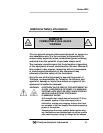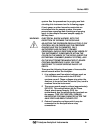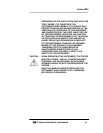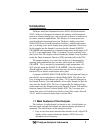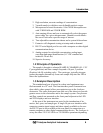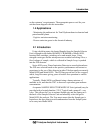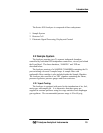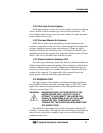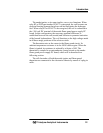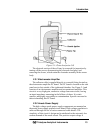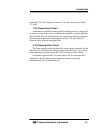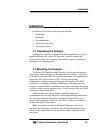
Introduction
Teledyne Analytical Instruments 8
2. High resolution, accurate readings of concentration.
3. Versatile analysis with three user-definable analysis ranges.
4. Microprocessor based electronics: 8-bit CMOS microprocessor
with 32 KB RAM and 128 KB ROM.
5. Auto ranging allows analyzer to automatically select the proper
preset range for a given measurement. Manual override allows
the user to lock onto a specific range of interest.
6. Two adjustable concentration alarms and a system failure alarm.
7. Extensive self-diagnostic testing at startup and on demand.
8. RS-232 serial digital port for use with a computer or other digital
communication device.
9. Analog outputs for selectable concentration, analog input
waveform and range identification (0-1 VDC standard and
isolated 4-20 mA dc).
10. Superior Accuracy
1.2 Principle of Operation
The sample is brought to a heated SAMPLE CHAMBER (50 - 120°
C per application) and into a sample loop and a 10-port, 2 position
(Position A & B) switching valve. The carrier gas, typically nitrogen,
pushes the sample alternatively from each sample loop into the FID to
detect the hydrocarbons.
1.3 Analyzer Description
The standard analyzer is housed in a sheet steel equipment case
flush-mounted in a 19" rack. The front interface panel is mounted on a
door which, when opened, allows convenient access to the Analyzer
electronics. The entire front panel can slide out of the chassis to provide
greater access to the electronics and to the sample system. Gas pressure
and flow controls are mounted on the front panel adjacent to the LED
and VFD displays and user interface.
At the rear of the instrument are ports for the introduction of air,
carrier, fuel, span, and sample gas. A single 50-pin user-interface cable
connector contains input/output and alarm signals available to the user.
An RS-232 port is also available at the rear panel for connection to a
remote computer or other digital communication device. The Analyzer is
set up for either 120 VAC 60 Hz or 230 50/60Hz operations depending



